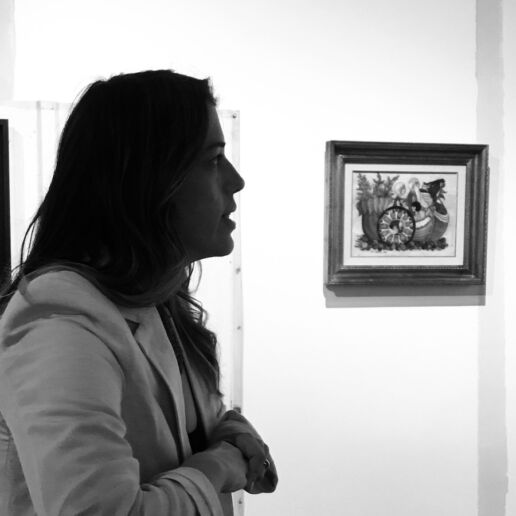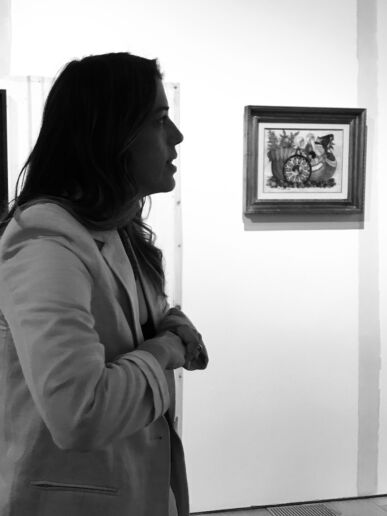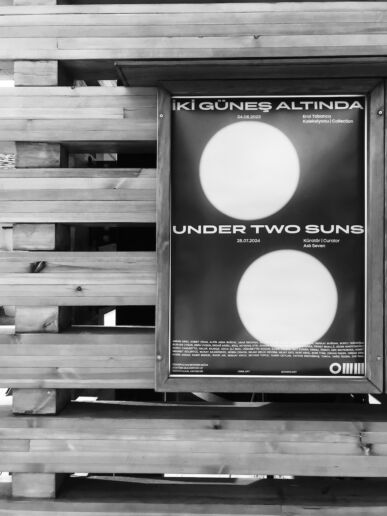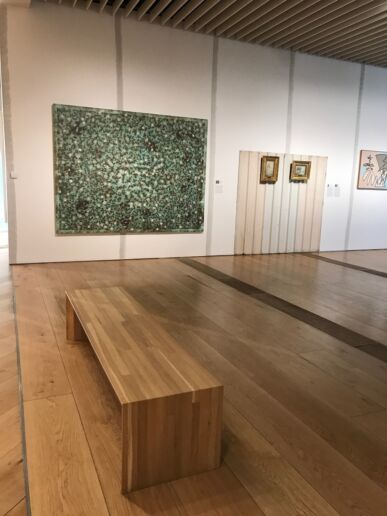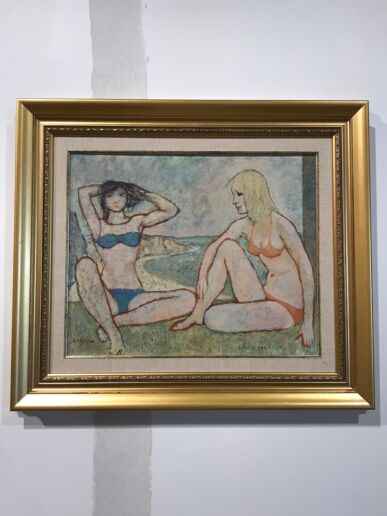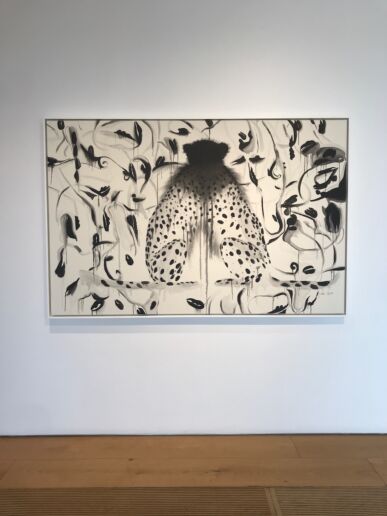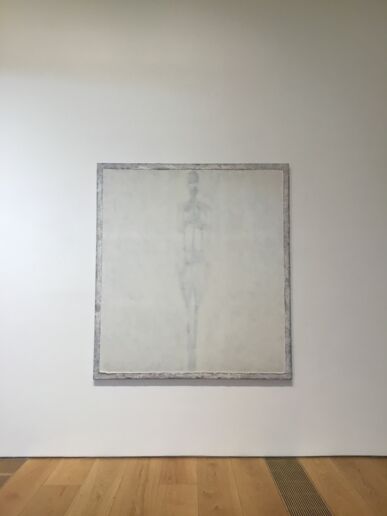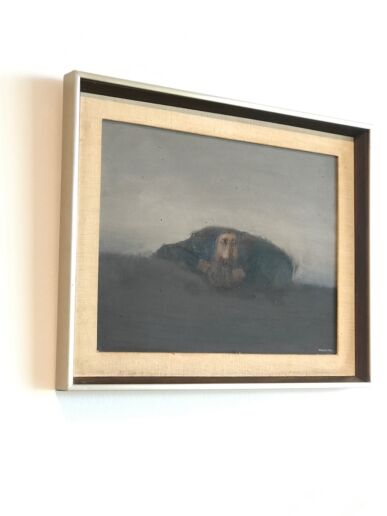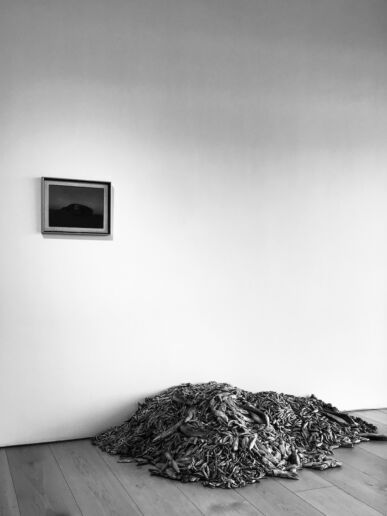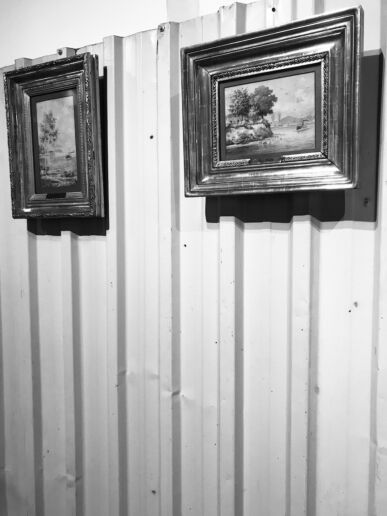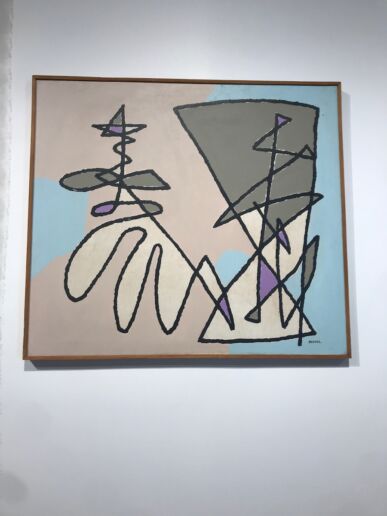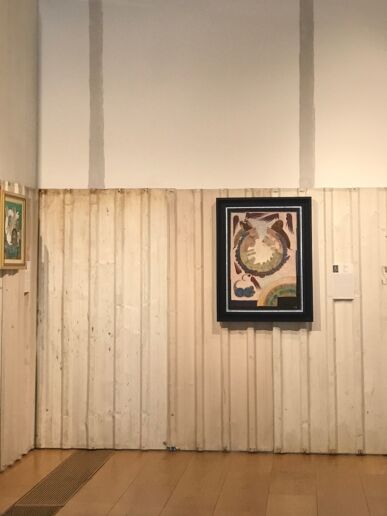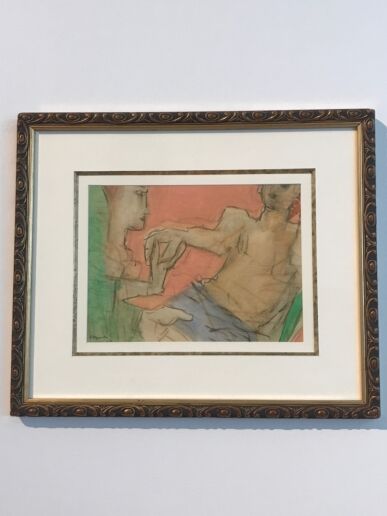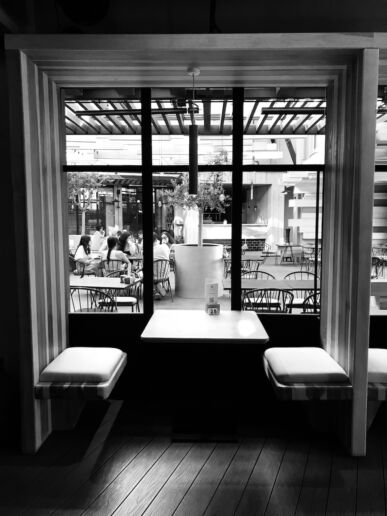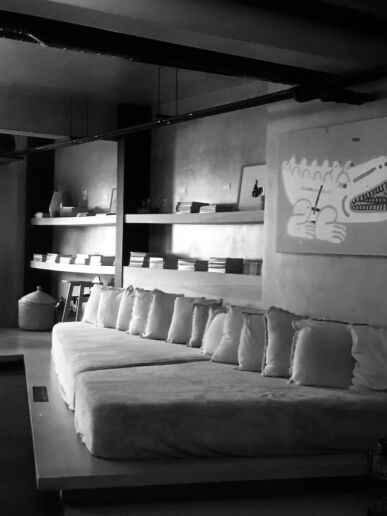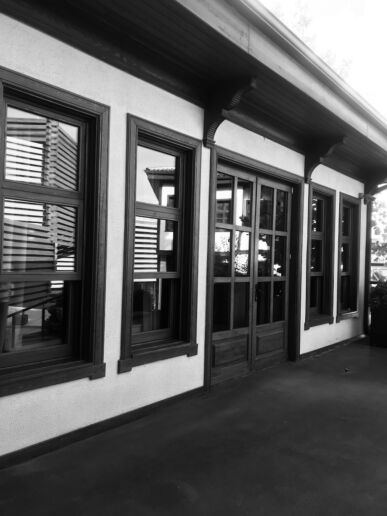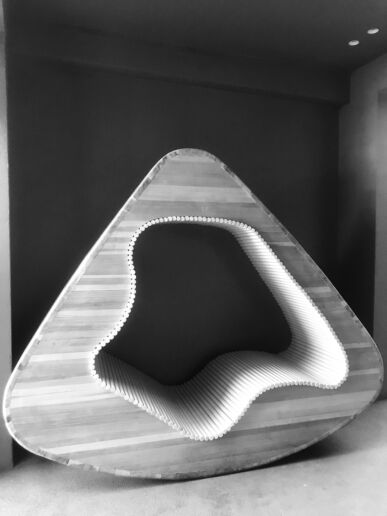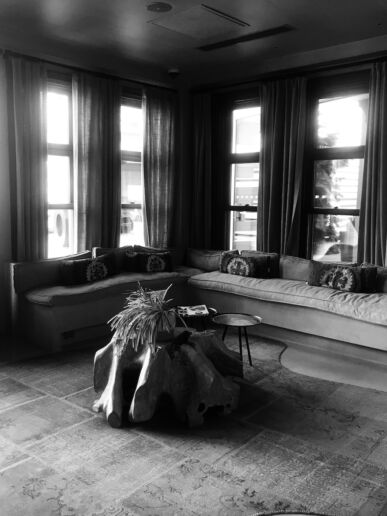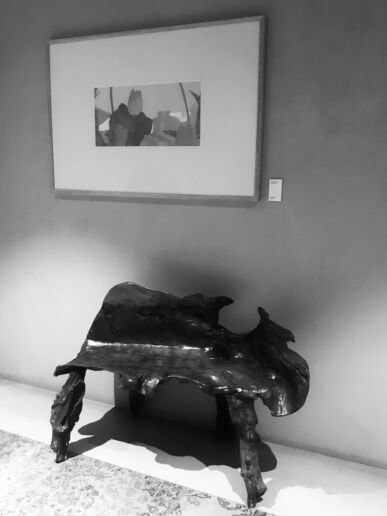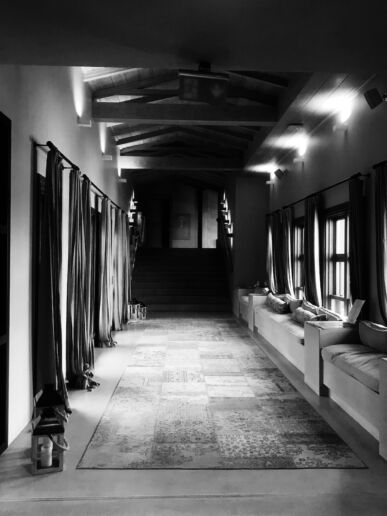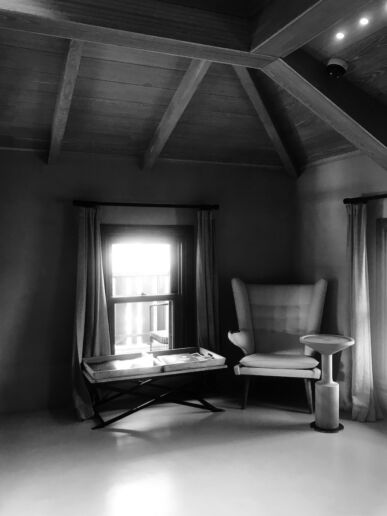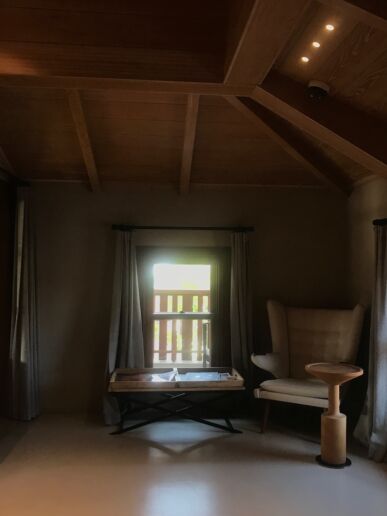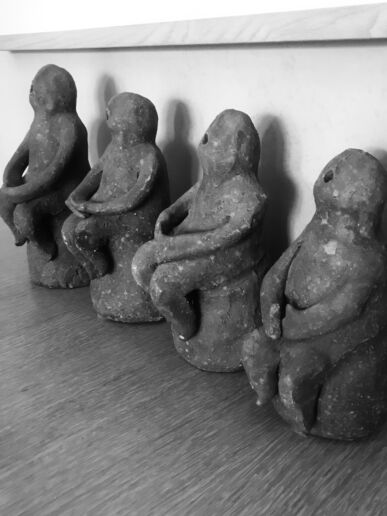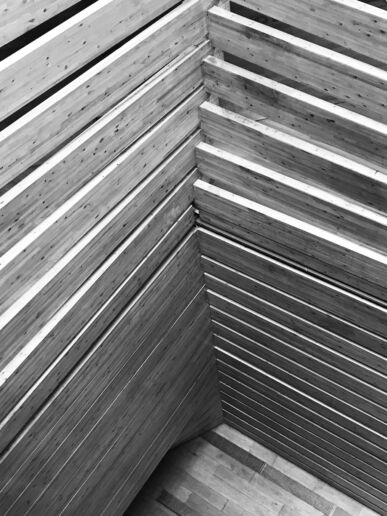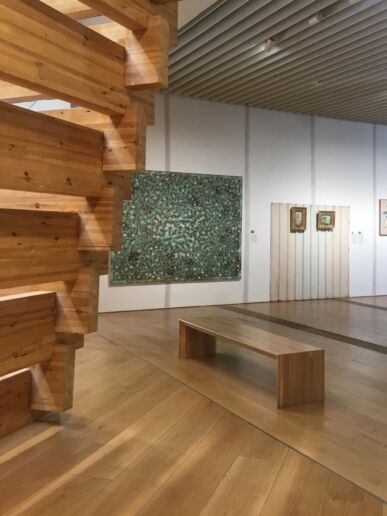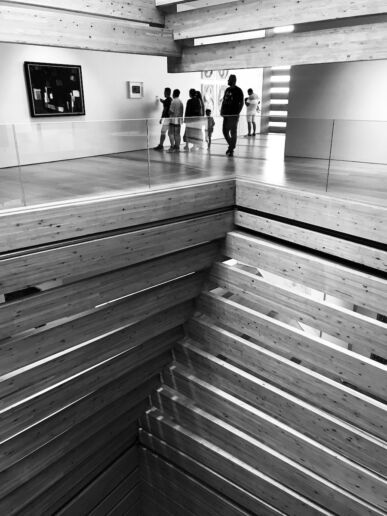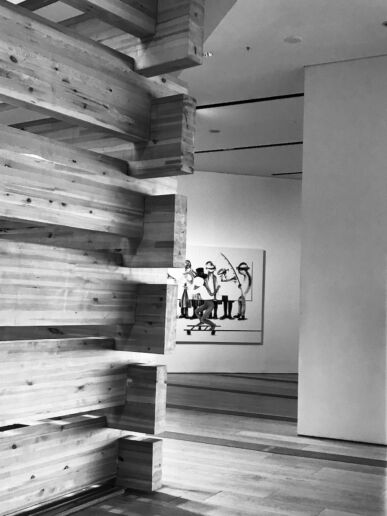“UNDER TWO SUNS” BY ITS CURATOR
Pursuing biological and cultural inspirations, Eskişehir’s Odunpazarı Modern Museum welcomes the new season with “Under Two Suns,” an exhibition curated by Aslı Seven as a selection of works from the Erol Tabanca Collection.The exhibition opened last August and can be visited until July 28, 2024.Photography: Pelin Kestanecioğlu
PAPER: What is the story behind OMM’s new exhibition “Under Two Suns”? How was the idea conceived and developed?
Aslı Seven: It all started in December 2022, when Defne Casaretto contacted me on behalf of the museum to invite me to curate a collection exhibition. Odunpazarı Modern Museum keeps two collections: Erol Tabanca and İdil Tabanca collections. Until now, most exhibitions in the museum were based on these two collections. Additional artwork was borrowed around the themes and choices of the museum’s curatorial team. The only exception is the museum’s opening exhibition, “Vuslat,” curated by Haldun Dostoğlu. “Under Two Suns” presents an exclusive selection from the Erol Tabanca Collection four years after the museum’s opening. I was intrigued by the project because it was an opportunity to design an exhibition where I could intersect my perspective with that of a collector. Contrary to projects focusing on production, there is a certain distance in curating a collection exhibition. I think the distance lies in the production processes and relationships between the works at hand. You are handling a preliminary selection based on specific parameters a collector has established over decades. This can be creatively limiting for a curator but also open up different avenues to maneuver. I visited the museum for the first time in early 2023. The architecture of the building was the first thing that stood out for me. The idea of enhancing the sun with mirrors was inspired by the building’s interaction with its surroundings, the gradual perceptibility of natural light on every floor, and the intermittent wooden structures that refract and enhance the sunlight to create a multitude of reflections across the interior. However, a coastal-themed selection created in the early days of working on the Erol Tabanca Collection was guiding. It was all about landscapes and horizons, paintings with figurative and abstract depictions of the sea, the wind, coastlines, and beaches. Now, seven or eight months down the line, I realize that perhaps the recent earthquake disaster that shook Turkey back then also had an impact. It was like being dragged into a terribly dark and cramped state of mind. I wanted to establish a space, a distance, a fantasy where we could collectively breathe again, dream, brainstorm, and establish a perspective. This coastal selection also offers a perspective on how artists have looked at the hundred-year history of Türkiye and the transformation of its geography. I can say that this elongated perspective had a therapeutic effect on me during our preparations for the exhibition. I hope the impact will be similar for the audience.
P: “Under Two Suns is a journey of discovery from the mythological and speculative horizons made possible by two suns to the deep connections of our existence on earth with our star.” Can you elaborate on this remark?
A.S: There are three narratives that I discuss in the exhibition text. The first is NASA’s 2012 Kepler Mission. A planetary system orbiting two suns has been discovered in the Milky Way, and it is called Kepler-47. At the center of this system are two suns that revolve around each other, and from where we are in space, there appears to be an eclipse every 7.5 days. This discovery gives rise to new theories about the formation of planets in the volatile, stressful, and extremely hot environment created by two suns. There are common speculative methods in our view of deep history with what I would call the avant-garde extremes of scientific discovery. From Mayan mythology to European and Chinese folklore, there are depictions of periods when there were two or more suns in the sky. While evaluating the volatile, stressful, and extremely hot environment during the hottest summer on record, speculative methods gain ground as what we call nature’s balance becomes increasingly uncertain. We assumed nature was reliable and consistent, but it is off track and causing threatening transformations. So, understanding where we stand requires remembering the mythological narratives we have inherited from our distant past as much as the unfathomable duration of astronomy. Focusing on artistic production and the ways in which art is experienced, the relationship with the sun triggers fundamental issues related to light perception and the optical subconscious and also refers to an invisible physical memory and subconscious. Art and human creations, or more broadly “techne,” merge biological and cultural impulses and can be regarded as forms that emulate the sun.
P: Mythology and science. What was your strategy to strike a balance and create a synthesis between these two different perspectives?
A.S: The ways science, art, and mythology overlap become clear when you get to the root of the relationship between narrative and abstraction. Take what we call utopia, for example. The fundamental problem of human existence or our place in the world is determined in relation to the unknown as much as our knowledge. In fact, our perception of reality is a set of propositions around which a consensus has been formed within certain historical conditions and is invariably open to change. The relationship between reality and fiction is like an anthropological constant. It exists in extremely lively and productive forms in fields related to the limits of human knowledge, such as science and art – and what I refer to as the unknown may be about the future or geography. Think of the fantastic monsters that were drawn on uncharted parts of ocean maps in the 15th century. I want to revitalize our relationship with the unknown while experiencing works of art, disregard the propositions we have learned as true or false, look at what we are looking at, assuming that there is something we do not know, and treat it as an exercise that activates our individual and collective intuition and imagination. Finding a liberating space is possible if we can approach art this way.
P: The exhibition is a selection of work from the Erol Tabanca Collection. To what extent does the character and content of this collection interact with the theme of the exhibition?
A.S: The Erol Tabanca Collection mostly consists of paintings. Using various techniques on canvas or paper, the collection spans a historical period of more than a hundred years. There are also sculptures, installations, and videos. The exhibition reflects this distribution, from scenes of the Bosporus by Hoca Ali Rıza in 1909 and 1911 to the works of four generations of artists living and producing in Turkey up until the 2020s. We also invited a smaller number of foreign artists, such as Etel Adnan and Zoe Paul, around the main theme. Some of the works that played a key role in establishing the conceptual framework of “Under Two Suns” include Taner Ceylan’s Turunç, which is located on the top floor of the museum, in the area where the building’s relationship with the sun is felt the most. On this floor, where you can watch the reflections and refractions of sunlight I mentioned, Turunç is a self-portrait in which the artist watches sunlight reflected on the wall, just like the audience. İlhan Koman’s sculpture “Wandering Old Man – Dervish” on the same floor has kinetic properties. A triangular prism gains circular movement with multiple shadows to activate the basic principles of physics and geometry. From its location in the building, it is in a way related to a rotation on a planetary scale. Besides the relationship between the sun and natural light, one of my priorities for this exhibition was to emphasize the relationship the museum building has with its surroundings. There is a connection between the compositions that resemble mountains, sea, sky, and sun -like the forms in Etel Adnan’s prints- and the mountains surrounding Eskişehir and the sun that sets behind them every day.
P: What about the connection between the works of this diverse group of artists featured in the exhibition?
A.S: The exhibition follows the phased relationship the OMM building has with the outside world and sunlight. It is based on three trajectories spread over three floors. I can answer your question by focusing on the ground floor: as the most closed area of the museum, the videos and paintings here come under the title “Öykünme Dürtüsü / Emulative Impulses.” The emphasis is on the importance of closed spaces in artificially reproducing natural light. This closed area can be a color field as in Mübin Orhon paintings, or it can be reproduced by including camera obscura type devices, windows, pixels, and the human body, or even in the formal setups of some works, for example, the closed-circuit loop structure in İnci Eviner’s video “Olağan Şartlar / Usual Conditions.” Hanging Alpin Arda Bağcık’s “Pipiotazin,” which treats the human body as a closed space and depicts a neurosurgery scene based on a photographic archive, and Nejat Satı’s painting, which resembles cellular, microbiological imaging from the “Hastalık / Disease” series, side by side, you can see the inside of the body and follow an impulse to illuminate it. On the opposite wall, you can find a formal partnership between an abstract Nejad Melih Devrim painting and Yağız Özgen’s “256 Web Colors,” based on the pixels and window structures. Going back to Mübin Orhon, the colored zones that deepen and get brighter from the composition by repeating the structure of the paper can be perceived as windows, obscurations, and color beams that create each other.


